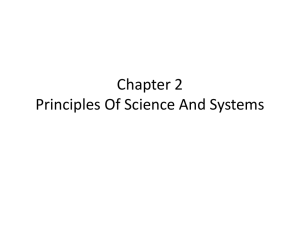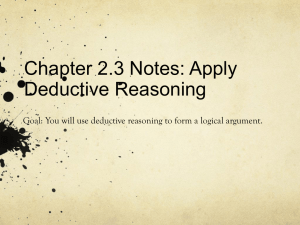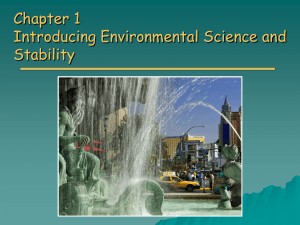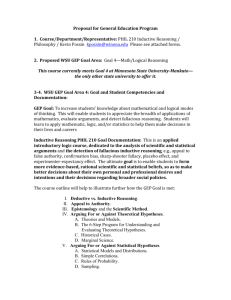Test1 ch1-2
advertisement
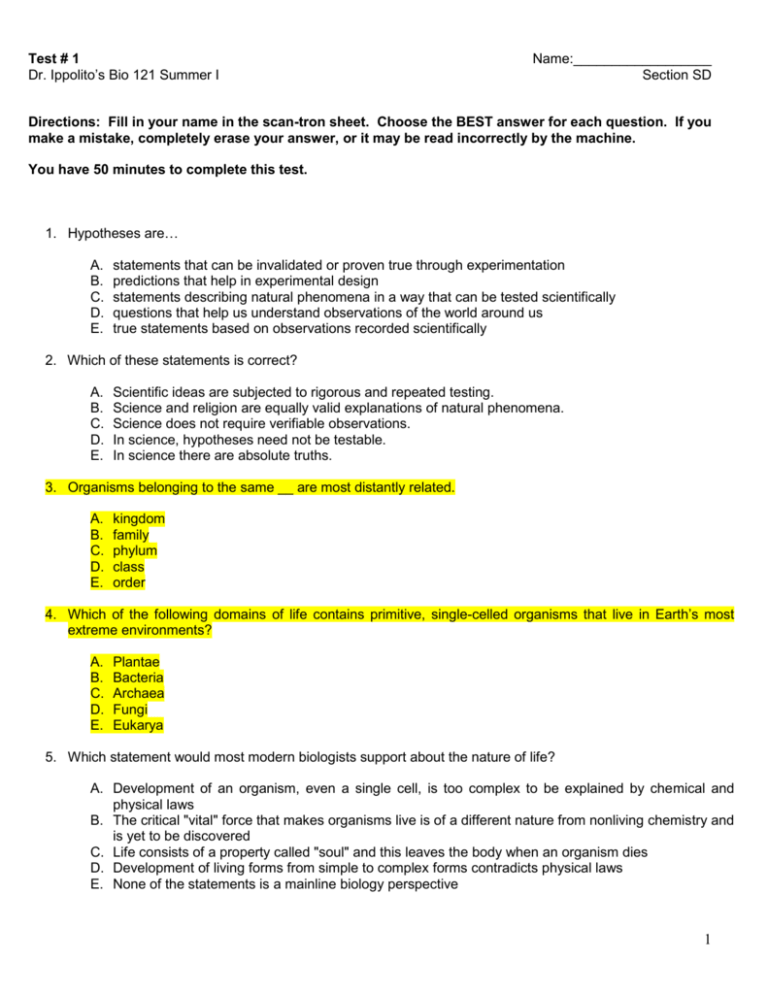
Test # 1 Dr. Ippolito’s Bio 121 Summer I Name:__________________ Section SD Directions: Fill in your name in the scan-tron sheet. Choose the BEST answer for each question. If you make a mistake, completely erase your answer, or it may be read incorrectly by the machine. You have 50 minutes to complete this test. 1. Hypotheses are… A. B. C. D. E. statements that can be invalidated or proven true through experimentation predictions that help in experimental design statements describing natural phenomena in a way that can be tested scientifically questions that help us understand observations of the world around us true statements based on observations recorded scientifically 2. Which of these statements is correct? A. B. C. D. E. Scientific ideas are subjected to rigorous and repeated testing. Science and religion are equally valid explanations of natural phenomena. Science does not require verifiable observations. In science, hypotheses need not be testable. In science there are absolute truths. 3. Organisms belonging to the same __ are most distantly related. A. B. C. D. E. kingdom family phylum class order 4. Which of the following domains of life contains primitive, single-celled organisms that live in Earth’s most extreme environments? A. B. C. D. E. Plantae Bacteria Archaea Fungi Eukarya 5. Which statement would most modern biologists support about the nature of life? A. Development of an organism, even a single cell, is too complex to be explained by chemical and physical laws B. The critical "vital" force that makes organisms live is of a different nature from nonliving chemistry and is yet to be discovered C. Life consists of a property called "soul" and this leaves the body when an organism dies D. Development of living forms from simple to complex forms contradicts physical laws E. None of the statements is a mainline biology perspective 1 6. Some members of a species have a genetic change causing them to be better suited to their environment. These members survive to reproduce and pass these genetic changes to their offspring. This is a clear example of… A. B. C. D. E. adaptation natural selection one of the driving forces behind evolution All of the choices are correct None of the choices are correct 7. A group of organisms of a single species living in a defined area at a defined time are… A. B. C. D. E. a community a population an ecosystem a biosphere none of the above 8. For five years, you wake up before the alarm is set to ring each morning. This leads you to conclude that people have a built-in "alarm clock" capable of waking them up. From a scientific viewpoint, this conclusion: A. B. C. D. is scientific because it is based on real observations is scientific because it is predictive of what will happen tomorrow morning is scientifically valid because 5 years x 365 days is a large number of trials. may not be valid because it generalizes about all people, and there may have been other variables that could awaken you without a built-in clock E. cannot be scientifically treated because it involves human behavior 9. Studying a brick does not predict the design of a skyscraper. Intense examination of muscle tissues does not allow you to predict the design of a kangaroo or clam. The structure of chlorophyll does not dictate the unique structure of a tree. These cases demonstrate… A. B. C. D. E. essential properties of life levels of organization from atom to biosphere determinism, or how all phenomena are predictable effects of causes emergent properties that are easily predicted by examining their parts emergent properties that cannot be predicted by examining their parts 10. A coastal climate is moderate (not extreme) because water… A. B. C. D. E. is a universal solvent is cohesive and adhesive resists changes of state has a high surface tension lacks hydrogen bonds when moderate 11. Which of the following does NOT represent homeostasis? A. Sensors detect CO2 levels in the blood and trigger an increase or decrease in the rate of breathing B. When body temperature drops, you shiver to generate heat; when your body heats up, you sweat and the evaporation cools you C. Feelings of hunger and then fullness affect the length of time and quantity of food heterotrophs eat, keeping body weight close to a set point D. Energy captured by plants is transferred to consumer and decomposer species, and eventually is lost as heat E. Cells adjusting the openings on the bottom of leaves respond to differences in water stress in order to maintain moisture inside the leaf 2 12. Which statement about acid-base chemistry is false? A. If a chemical accepted H+ from a solution, it could be considered both an acid and a buffer B. Buffers are chemicals that can both take up and release hydrogen ions, thus maintaining pH changes in a chemical system C. The pH scale concerns itself with the concentration of free (and therefore reactive) protons in solution D. Bases accept H+ from solution, while acids give them off E. Neutral solutions have an equivalent amount of H+ and OH13. Prior to prescription medications to control stomach acid and "heart burn" people consumed baking soda (sodium bicarbonate) to decrease their discomfort. This would indicate that sodium bicarbonate A. B. C. D. E. is an effective buffer should be sold as a prescription drug enhances acid production blocks acid production None of the choices are correct. 14. An abandoned Indiana coal mine spoil bank1 contains chunks of pyrite minerals. Under constant erosion and weathering, the pyrites leech large amounts of sulfuric acid (H2SO4 , a strong acid). The spoil banks are also mixed with large quantities of basic limestone and clay carbonates. What should occur over time? A. B. C. D. E. The pH level will drop until all acid has washed out The pH level will remain at 7.0 because of constant washing with rain The pH level will remain at 7.0 because all acid will be immediately neutralized by bases The pH levels will be spotty and vary over time, first more acidic but drifting back toward 7.0 Bases always dominate over acids 15. Which of these is deductive reasoning? A. My car will not start. B. My car's battery is dead. C. If my car does not start and I recharge the battery, then my car will start. D. My car is too old to function properly. E. What is wrong with my car? 16. From Kansas to central Indiana to Pennsylvania, many people believe they have water moccasins (also called "cottonmouths") in their ponds. Some assert they have seen them, although they are certainly not so foolish as to try to capture one alive. Meanwhile, both the fish and game offices and the range maps in herpetology books indicate that this kind of poisonous snake does not breed this far north. What is the most scientific attitude to assume on this issue? A. Observations by both the public and the fish and game officers are subjective so this is not easily resolved objectively B. A simple field trip to the pond locations–that captured and confirmed the identity of the snakes–would settle the matter C. Scientific books with range maps are based on field research and, therefore, determine the truth in this case D. Because living organisms are active, scientific theories in biology always change E. None of these are scientifically valid attitudes. 1 A bank or pile of material removed from an excavation. 3 17. If the pH of cytoplasm is about 7, the cytoplasm is about ____ times more ____ than the stomach, which has a pH of about 2. A. B. C. D. E. 100,000…alkaline 100,000… acidic 5…alkaline 5…acidic None of the above pairs are correct. 18. Four groups of mice consume different amounts of sweetener in their food. The control group is the one that receives A. B. C. D. E. 10 mg/day of sweetener 50 mg/day of sweetener no sweetener extra food milk instead of water 19. One classic definition of life is "a self-replicating molecular assemblage." However, clay particles (in clay soil) contain layered aluminum and iron compounds that determine the pattern of the adjacent layers of sediment. This is technically a self-replicating molecular assemblage. A. B. C. D. E. Therefore, it is living. It is not living because it cannot think. It is not living because there were no molecular changes (or chemistry) involved. It is not living because there is no carbon involved; otherwise, such duplication would be living. It is not living because it is a simple repetitive process without the ability to evolve or respond to the environment. 20. All of the organisms and nonliving components of a particular environment are referred to as a(n)… A. B. C. D. E. cell community ecosystem population biosphere 21. Relative to prokaryotic cells, eukaryotic cells are… A. B. C. D. E. larger and more complex smaller and simpler larger and equally complex smaller and more complex smaller and equally complex 22. How does taxonomy assist biologists? A. B. C. D. E. by providing easily remembered scientific names for organisms by explaining why life exists by categorizing diverse items into smaller and smaller numbers of groups by reducing life to its smallest common denominator, the cell all of the above 23. What does adaptation mean in a biological context? A. the physiological process by which individuals adjust to their environment B. the accumulation of favorable variations in a population over time 4 C. the morphological changes that occur in individuals as they grow and develop D. the ability of organisms to alter their appearance under changing environmental conditions E. all of the above 24. How does inductive reasoning differ from deductive reasoning? A. The scientific method utilizes deductive reasoning, not inductive reasoning, to establish conclusions. B. Deductive reasoning involves going from the specific to the general, whereas inductive reasoning involves going from the general to the specific. C. Inductive reasoning is based on hypotheses, and deductive reasoning is not. D. Inductive reasoning is based on experimentation, and deductive reasoning is based on observation. E. Inductive reasoning involves going from the specific to the general, whereas deductive reasoning involves going from the general to the specific. 25. How do hypotheses differ from theories? A. B. C. D. E. Theories are more comprehensive than hypotheses. Theories must be testable; hypotheses do not need to be testable. Hypotheses are educated guesses, and theories are tentative explanations. Hypotheses are derived from experimentation, whereas theories are derived from observation. Hypotheses are more generally stated than theories. When you are finished with your test, please raise your hand and it will be collected. 5
